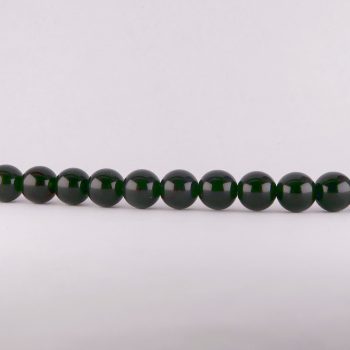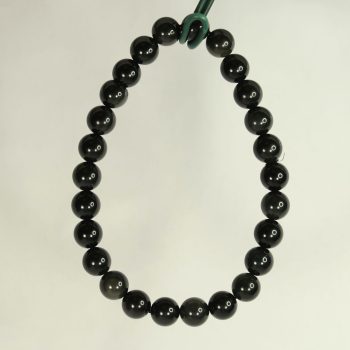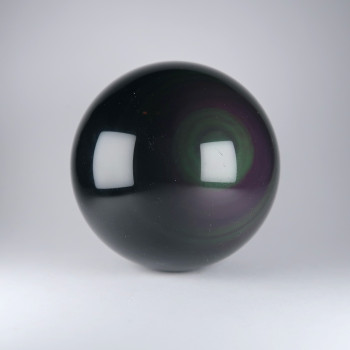Rainbow Obsidian
Rainbow obsidian is a natural volcanic glass that exhibits a colorful sheen or “rainbow” effect when viewed in proper lighting. It is formed when molten lava rapidly cools and solidifies before crystallization can occur, resulting in a smooth, glassy texture.
The rainbow effect of obsidian is caused by the reflection, refraction, and interference of light on microscopic gas bubbles or thin layers of mineral inclusions within the glass. These layers can create a wide range of colors, including purple, blue, green, yellow, and orange.
Showing all 3 results
-

Obsidian bead strands (Rainbow)
£10.00 -

Obsidian Bracelets (Rainbow)
£4.00 -

Obsidian spheres / crystal balls (Rainbow)
£12.50
Information about Rainbow Obsidian
Rainbow obsidian is a volcanic glass known for its iridescent, multi-coloured sheen that displays a spectrum of colours when viewed from different angles.
The primary colours seen are green, blue, purple, gold, and red, often appearing in bands or streaks, which gives it its characteristic “rainbow” effect.
This striking visual is the result of internal gas bubbles or mineral inclusions within the obsidian, which create an optical phenomenon known as iridescence.
Uses and History
Rainbow obsidian is primarily used in the creation of jewellery, usually cut as cabochons. It is also used for various carved decorative items due to its beautiful, captivating appearance.
It is polished into beads, and sometimes set into pendants, rings, and bracelets for those seeking unique accessories with a touch of natural beauty. The iridescence of rainbow obsidian makes it highly prized by lapidaries and gem collectors.
Obsidian has been used by humans for thousands of years, with evidence of its use dating back to prehistoric times.
Ancient Mesoamerican cultures, like the Aztecs and Mayans, valued it for its sharpness and used it to make blades, mirrors, and ritual objects.
Mineralogy
Black with rainbow iridescence.
Hazards and Warnings
Obsidian of all forms can be extremely sharp when broken or cut.
Mineral collectors should wash their hands after handling specimens, to avoid any exposure to potential toxins.
Almost all rocks, minerals (and, frankly, almost all other substances on earth) can produce toxic dust when cutting, which can cause serious respiratory conditions including silicosis.
When cutting or polishing rocks, minerals, shells, etc, all work should be done wet to minimise the dust, and a suitable respirator or extraction system should be used.
Translations
Arabic:
Hindi:
Portuguese:
- Obsidiana arco-íris
Bengali:
Indonesian:
Punjabi:
English:
- rainbow obsidian
Italian:
- Obsidiana arcobaleno
Russian:
- Радужный обсидиан
French:
- Obsidienne arc-en-ciel
Japanese:
- レインボーオブシディアン
Spanish:
- Regenbogenobsidian
German:
- Regenbogenobsidian
Korean:
- 레인보우 옵시디언
Thai:
- แร่ออบซิเดียนรุ้ง
Gujurati:
Mandarin Chinese:
- 彩虹黑曜石
Urdu:
